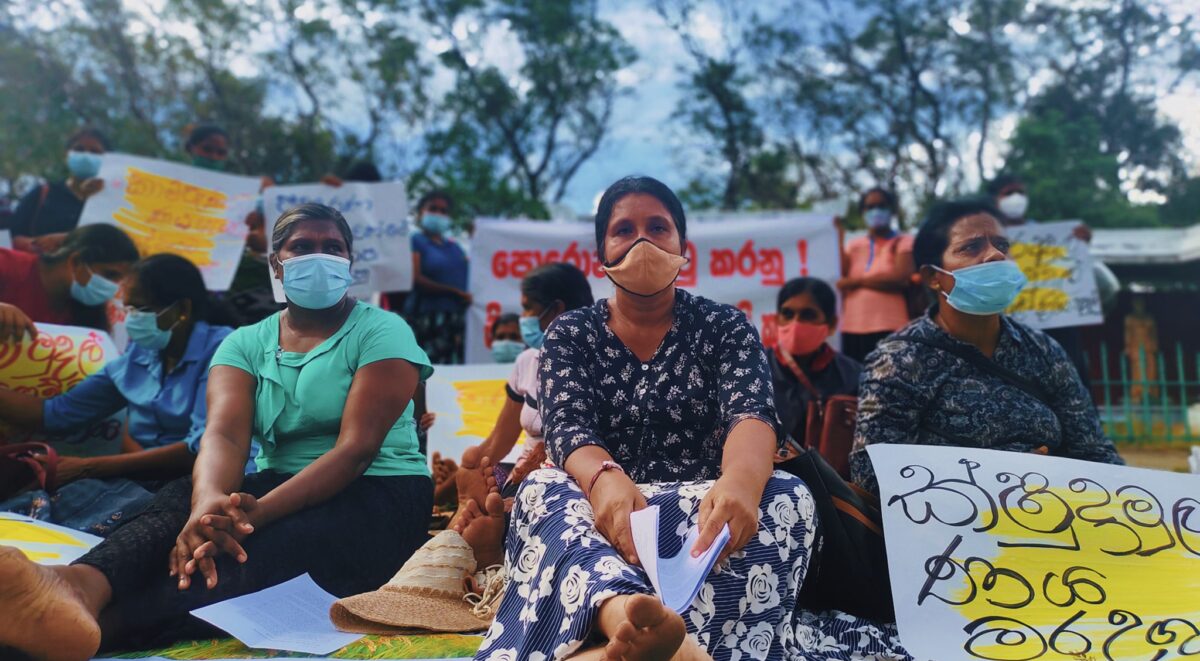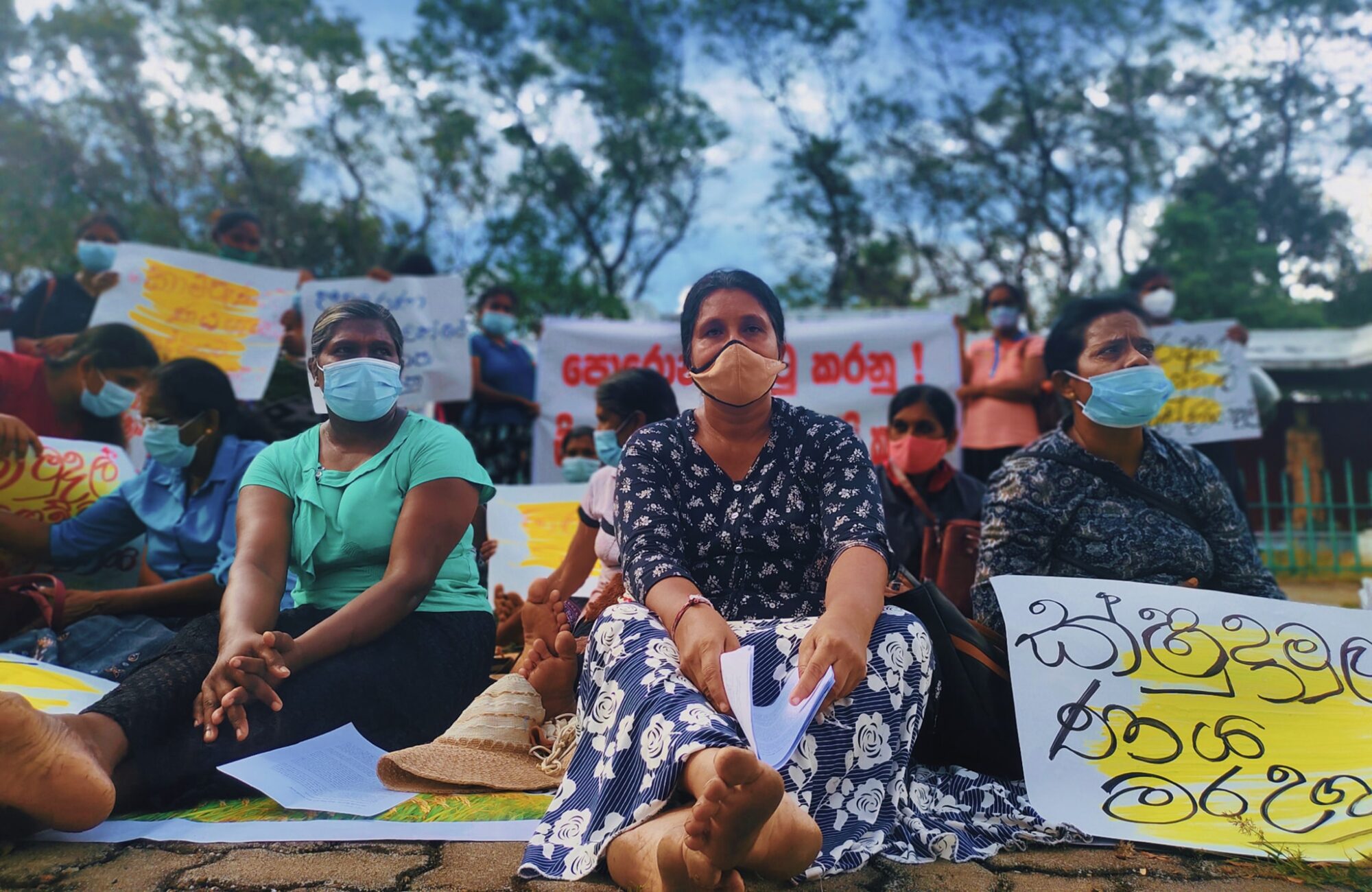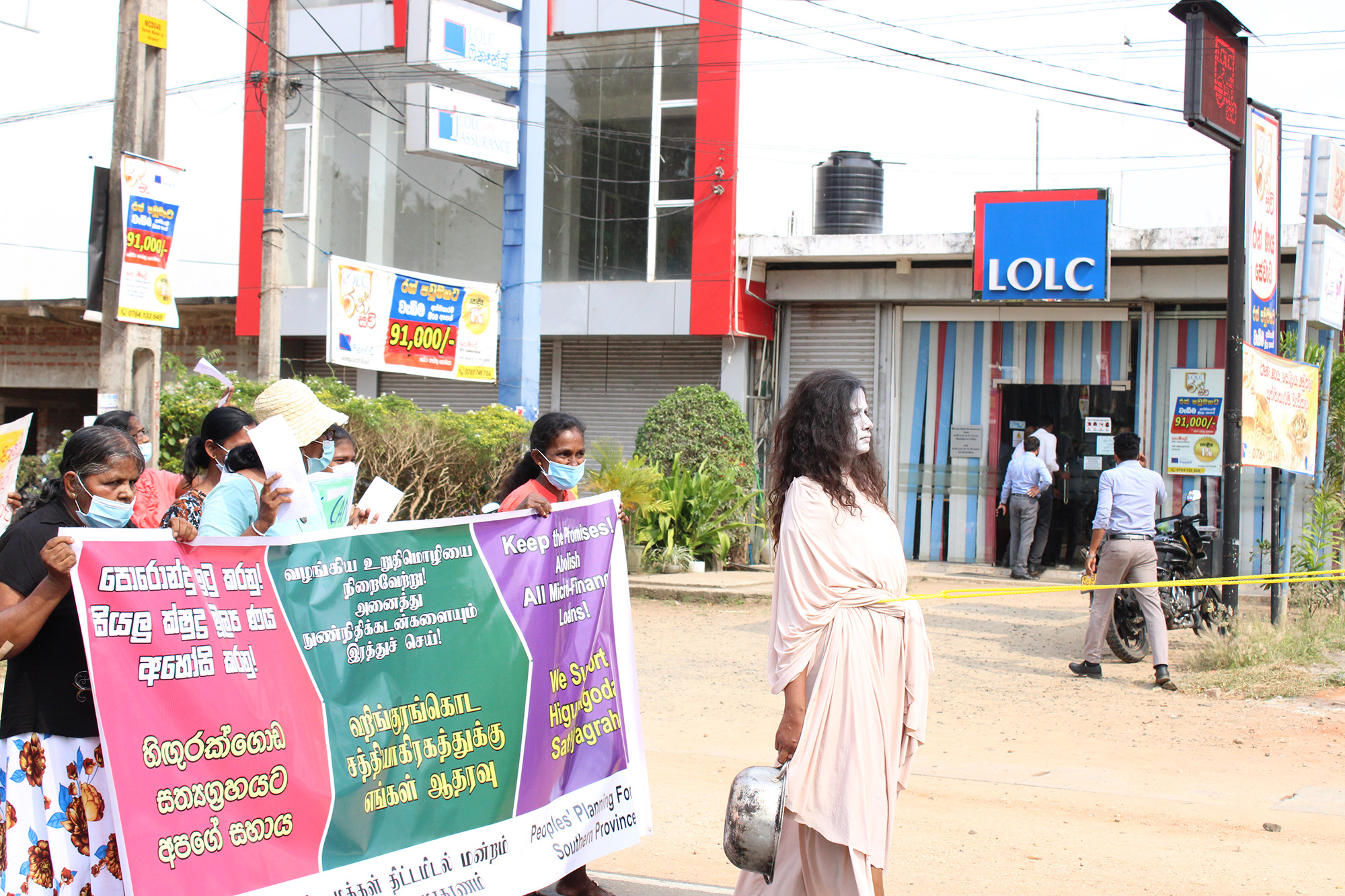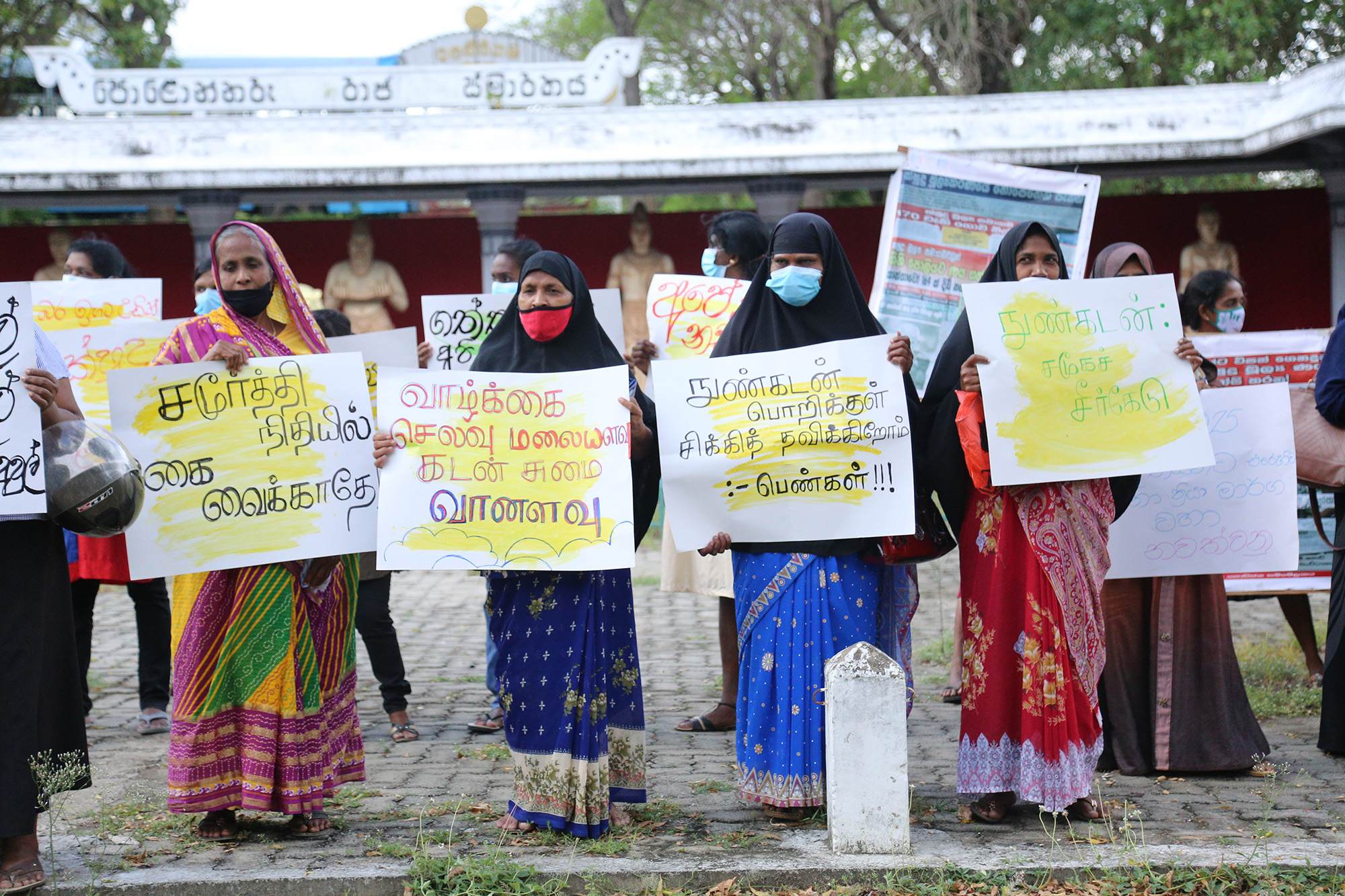
By: Amali Wedagedara (Sri Lanka)

On March 8th (International Women’s Day), the “Collective of Women Victimised by Microfinance Debts” began a non-violent sit-in protest against a development model that has left a mark of significant physiological and physical violence on them. The Satyagraha (a form of nonviolent resistance often evoked by Gandhi) of women – which lasted for 55 days until it was temporarily called off on May 1st due to raging third wave of COVID-19 in Sri Lanka -demanded the immediate abolition of debt incurred through microfinance loans.
Contrary to the popular narrative about microfinance, the protesting women highlight that the unsustainable microfinance debt (lent at exploitative rates by primarily finance companies) has brought about dependency and deprivation. Established Microfinance and finance companies (such as Berendina, Commercial Credit, LOLC, HNB Finance and Vision Fund) have approached the women from low-income households with the promise of development.
When the women are unable to repay the debt, the companies have forced women to payback by selling or mortgaging their gold, household equipment and land. Finance companies have also initiated legal action against women in courts to recover unpayable debt. While the microfinance borrowers are pushed below the level of subsistence, microfinance lenders have flourished and some have even expanded their microfinance lending business to other countries in South Asia, South-East Asia, and Africa.
The women therefore have five demands: cancelling all microfinance loans in Sri Lanka, halting the recovery (the process of demanding the payment of loans) of all loans immediately until an audit is done on predatory microfinance, stopping all legal action taken against microfinance debt victims, removing microfinance debt victims from the Credit Information Bureau of Sri Lanka which excludes women from the formal financial markets, and empower women to formulate a credit mechanism owned and controlled by themselves that centres around social wellbeing.

A development model of predatory finance
The women’s call to abolish all microfinance debts in Sri Lanka helps to expose a crisis in a development model that has been used now for decades: that small credit loaned to individuals facilitate development and enable them to enterprise themselves out of poverty and attain social security is not working.
Microfinance, a landmark in the poverty industry since the early 2000s, was aimed at enhancing the socio-economic wellbeing of low-income people. The World Bank, Asia Development Bank, European donors, commercial banks, equity managers and venture capitalists saw these new mechanics of ‘investments’ instead of ‘aid’ as highly attractive.
As poverty became a profitable business venture, the market increased rapidly with microfinance and finance companies. This was particularly the case in Sri Lanka. Following the Asian tsunami in 2004 and the end of the Civil War in 2009, the microfinance market in Sri Lanka exploded. As micro lenders multiplied, the phenomenon of multiple borrowing increased. This has led to extreme over-indebtedness. In Sri Lanka, a microfinance borrower has three microfinance loans on average. These loans also accompany borrowing from informal money lenders and other forms of debt such as pawning. Multiple loans also correspond positively with the number of microfinance lenders operating in a given area.

A global challenge
The Satyagraha initiated by the “Collective of Women Victimised by Microfinance Debts” resonates with similar debtors’ mobilizations that have taken place in India, Cambodia, Bolivia, Pakistan, and Mexico.
Protests related to the micro-finance suicide epidemic in Andhra Pradesh (India) in 2010; protests against abusive lending in Mexico and Bolivia in the 1990s and early 2000s; the ‘No Pago’ movement (a movement for non-payment of loans) in Nicaragua in 2008; the documentation of manipulative lending expropriating the land of the indebted people in Cambodia in 2020 – all of these examples have brought forward plenty of evidence which should force policymakers and development practitioners to evaluate the microfinance model.
A range of empirical studies on microfinance practices in Bangladesh, India, Cambodia, and Vietnam have also challenged the capital-academy industrial complex that has perpetuated the hegemony of microfinance as a sufficient developmental model to alleviate poverty.

Vision for a new form of development
The women who are battling years of discriminatory lending, as well as physical and psychological violence enacted by microfinance lenders, hold abundant lived experiences in development fallouts. As a result, their struggles also present progressive developmental alternatives.
For example, women participating in the Satyagraha argues that only financial autonomy – a credit mechanism owned and controlled by themselves at the village level – could engineer emancipatory development. In this development model, village level savings societies fashioned after co-operatives would function as mobilizers against predatory finance. They would also serve as the first step towards creating a financial mechanism of their own.
Instead of debt that forecloses all means of future possibilities, indebted women demand equal opportunities which liberate their developmental capacities. In place of domination of capital, the alternative financial model they propose upholds solidarity and equality. As opposed to extractive forms of credit which bankrupt the village and uproots the villagers, the women propose locally-rooted credit systems that strengthen their productive resources. Non-monetised forms of productive relations (such as mutual aid and zero-budget agriculture) are also important parts of their development strategy.
A movement of debtors is a creative space that reproduces life ravaged by vulture finance. It is a forward-looking and innovative landscape that takes on dogmatic theories of modernisation that multilateral financial organizations advocate.
Subscribe to the “Voices from the South” newsletter.

